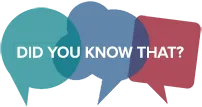Powerful image analysis software is available to campus users?
It can be valuable to analyze image data to count or measure features found in microscopy images. There are a number of campus resources for image analysis that you might not be aware of:
- BIO5 Statistics consulting lab – If you analyze too few images your statistics can be underpowered and your results/correlations may not be correct. During the academic year there are often free opportunities to consult with students from the graduate biostatistics course.
- Segmentation/thresholding type image analysis – While labs often use FIJI/ImageJ for their image analysis, if you need to do more elaborate analyses, analyze large numbers of images, and/or do the same analysis over & over it can be very helpful to have macro-driven software do the analysis. HCImage (Hamamatsu) is available in the Imaging Cores – Optical. Doug Cromey has been building macros in this software for 2 decades now. The software is free to use, although there may be some expense (Doug’s time) in setting up the macro for the first time.
- The Imaging Cores - Optical has a powerful workstation available (no cost) for image analysis. In addition to ImageJ/Fiji and HCImage, the workstation has CellProfiler, QuPath, Adobe software including Photoshop & Premiere Pro (you may need to have your own license) along with software viewers for Leica, Nikon, Olympus and Zeiss image data files.
- More elaborate types of image analysis, such as 3D/4D data
- UITS has a powerful workstation with commercial image analysis software such as Imaris, Amira and MatLab (now located in the Main Library's Catalyst VR studio, computer #3). In addition they have other software for visualizing complex types of data. There is no fee for this computer, contact the VIS lab (vislab-consult@list.arizona.edu) for a consultation.
- The Kuiper Materials Imaging and Microscopy Facility (KMICF) has a Avizo license available for students, staff and faculty to use. Avizo is a software for 2D and 3D data visualization and analysis.
- Large images (e.g., scanned microscope slides), immunohistochemistry and/or fluorescence, TMAs – The Translational BioImaging Resource has a copy of the powerful image analysis software, Definiens Tissue Studio, which is designed to work with scanned slide images (digital histology) of IHC and fluorescence. There are some additional costs for consultation and training, but once you are in the analysis phase the cost is $12/hr. Dr. Andy Rouse is the contact for this software (rouse@email.arizona.edu)
- The UA Cancer Center's TACMASR has a microscope slide scanner and a dedicated workstation with nearly a full suite of Nikon image analysis software.
- CyVerse – This NSF funded project (based at the UA) allows users to build image analysis pipelines and upload data into the cloud. Analysis tools include Python, MatLab and Java/ImageJ.


